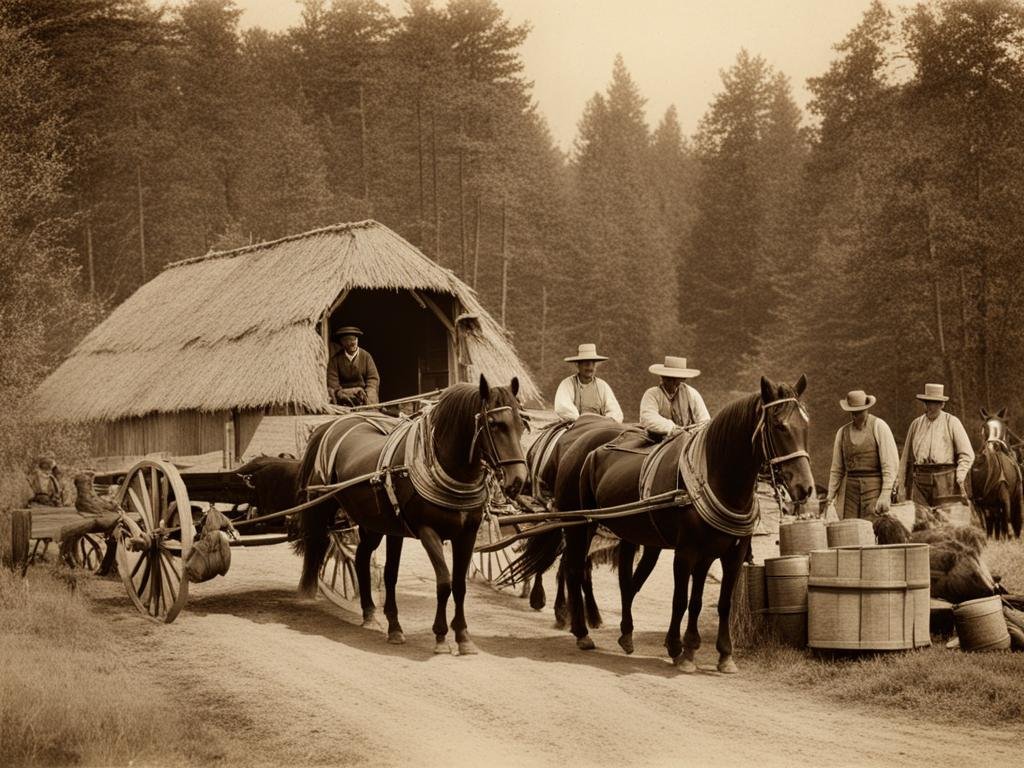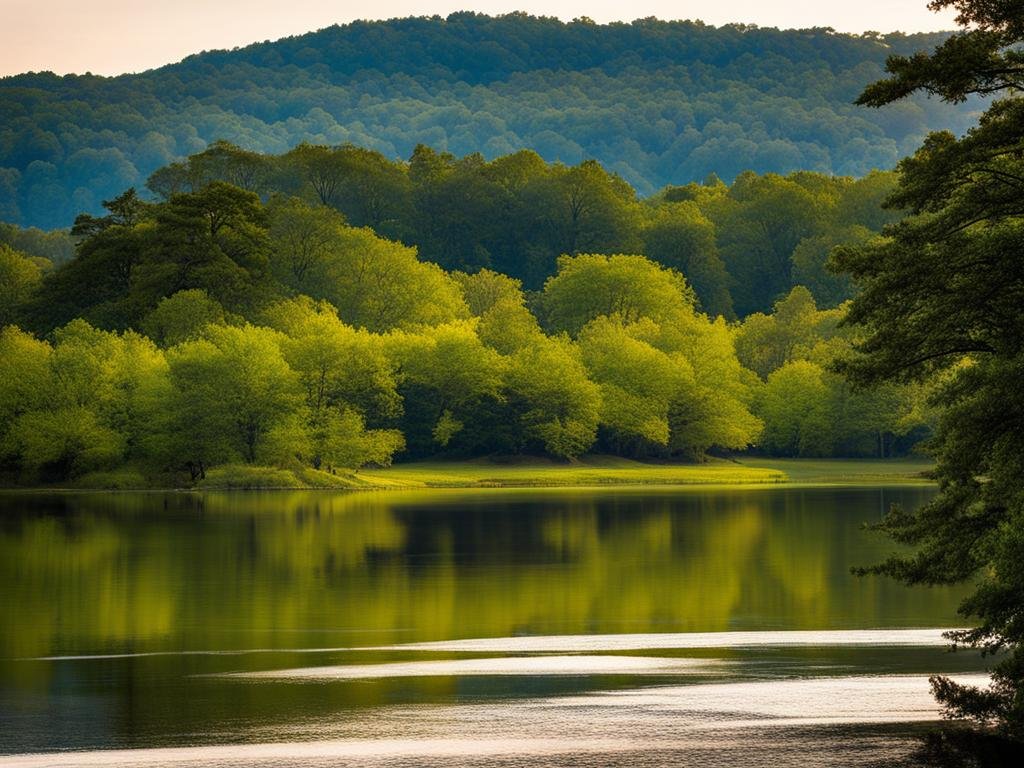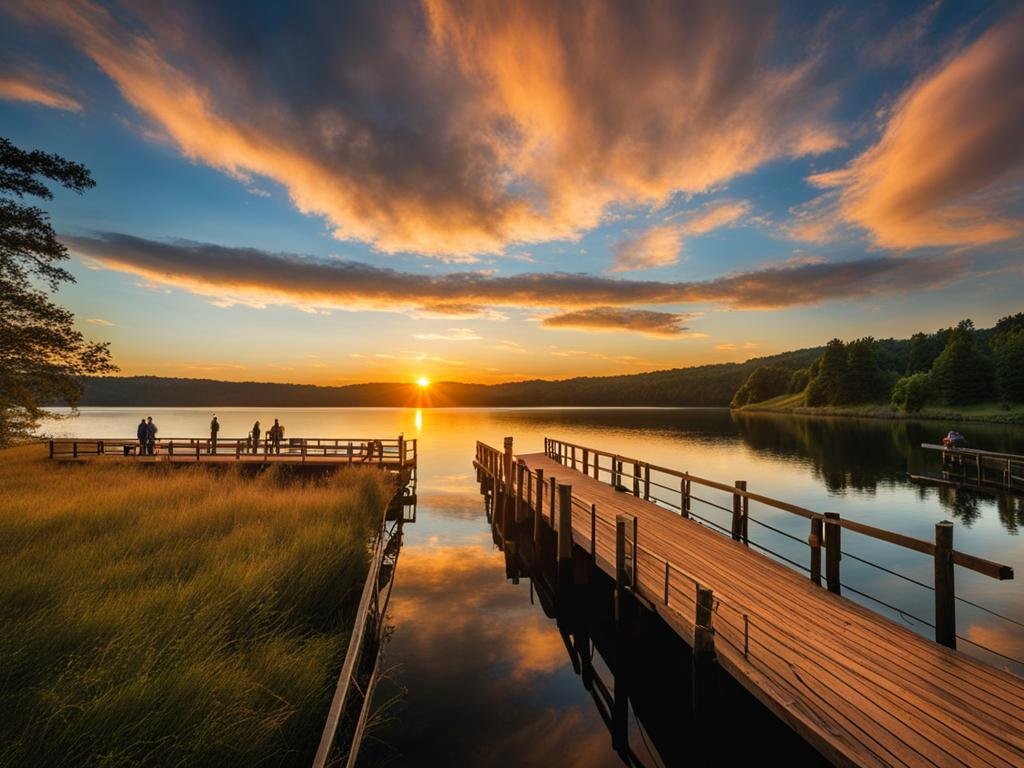Anderson Marsh State Historic Park is a scenic and culturally rich state park located in Lower Lake, California. The park’s mission is to preserve California’s natural and cultural resources while providing opportunities for outdoor recreation. With its four diverse habitats and abundant wildlife, the park has sustained native peoples for thousands of years. The park is also home to the Anderson Marsh Archaeological District, which contains numerous prehistoric Native American sites dating back as far as 14,000 years. Visitors to the park can explore the ranch house and outbuildings that once belonged to the Anderson family, who played a significant role in the area’s history. The park offers a variety of recreational activities, including hiking trails, birdwatching, and picnicking.
Key Takeaways:
- Anderson Marsh State Historic Park is a scenic and culturally rich state park in Lower Lake, California.
- The park’s diverse habitats and abundance of wildlife have sustained native peoples for thousands of years.
- The Anderson Marsh Archaeological District contains prehistoric Native American sites dating back 14,000 years.
- Visitors can explore the historic ranch house and outbuildings once owned by the Anderson family.
- The park offers recreational activities such as hiking, birdwatching, and picnicking.
Native California Indians at Anderson Marsh
Anderson Marsh State Historic Park is deeply rooted in the cultural heritage of Native California Indians. The park and its surrounding area were once home to various tribes, including the Koi Nation of Northern California, a Southeastern Pomo tribe. These native peoples have a long history in the region, dating back at least 14,000 years.
The Koi Nation had a significant presence in the area, utilizing the land’s resources for trade and sustenance. They were skilled traders, controlling valuable resources such as obsidian and magnesite. The Lake Miwok people also inhabited the region, relying on the natural resources for their daily needs and cultural practices.
Today, the descendants of these native tribes continue to preserve their ancestral languages and cultures, ensuring their traditions are passed down to future generations. The rich cultural heritage of the Native California Indians is an integral part of Anderson Marsh State Historic Park’s identity, providing visitors with an opportunity to learn and appreciate the indigenous history of the land.
Native Tribes at Anderson Marsh
| Tribes | Significance |
|---|---|
| Koi Nation | Southeastern Pomo tribe with a history dating back 14,000 years |
| Lake Miwok | Utilized natural resources for food, shelter, and cultural practices |
| Pomo | Contributed to the cultural diversity of the region |
| Wappo | Had a presence in the surrounding area |
| Wintun | Inhabited nearby regions |
The history and contributions of these native tribes enrich the experience of visiting Anderson Marsh State Historic Park, providing a deeper understanding of the land’s cultural significance.
The History of Anderson Marsh
In the late 1820s, European American settlers began making their way to the area surrounding Anderson Marsh. One of the early settlers was Dennis Yokum, who filed a Homestead Act claim in 1854. However, the land eventually came under the ownership of the State of California. Another prominent settler in the area was J.M. Grigsby, who, along with his brother, was already living there when the land was put up for sale in 1855. They seized the opportunity and purchased the acreage, establishing a farm and livestock ranch that thrived for the next 15 years.
In 1885, the Anderson family took center stage in the history of Anderson Marsh. Led by the Scottish immigrant John Still Anderson, the family acquired the land and expanded their ranching operations. Their ranch house and outbuildings, which visitors can explore today, played a significant role in shaping the area’s history. The Anderson family continued to reside on the property for several generations until it was acquired by California State Parks in 1982.
This rich history of Anderson Marsh demonstrates the enduring legacy of European American settlers and their contributions to the development of the region. The land has undergone many transformations over the years, from the early homestead claims to the establishment of thriving ranches. Today, Anderson Marsh State Historic Park stands as a testament to the enduring spirit of these settlers and the importance of preserving California’s cultural heritage.

European American Settlers at Anderson Marsh
| Settler | Year |
|---|---|
| Dennis Yokum | 1854 |
| J.M. Grigsby | 1855 |
| The Anderson Family | 1885 |
The table above provides an overview of the European American settlers who played a significant role in the history of Anderson Marsh. Dennis Yokum filed a Homestead Act claim in 1854, marking one of the early instances of European American settlement in the area. J.M. Grigsby and his brother took advantage of the land sale in 1855 and established a successful farm and livestock ranch on the acquired acreage. The Anderson family, led by John Still Anderson, acquired the land in 1885 and expanded their ranching operations, leaving a lasting impact on the area’s history.
Recreation at Anderson Marsh State Historic Park
Anderson Marsh State Historic Park offers a range of recreational activities for visitors to enjoy. Whether you’re looking to have a picnic, explore hiking trails, or go birdwatching, the park has something for everyone.
Picnicking
One of the highlights of visiting Anderson Marsh State Historic Park is the opportunity to have a picnic surrounded by the park’s natural beauty. The park features several designated picnic areas where you can relax and enjoy a meal with your family and friends. While picnicking, you can take in the serene views of the park’s diverse habitats, including lush marshes, rolling hills, and oak woodlands.
Trails
If you’re up for some outdoor adventure, Anderson Marsh State Historic Park offers a variety of trails to explore. The Cache Creek, Anderson Flats, Ridge, and Marsh Trails provide opportunities to immerse yourself in nature and discover the park’s wildlife. As you hike through the park, you’ll have a chance to spot various bird species, native plants, and maybe even catch a glimpse of some wildlife. The trails cater to different skill levels, making them accessible for both beginners and experienced hikers.
Birdwatching
Anderson Marsh State Historic Park is a haven for birdwatching enthusiasts. With over 150 species of birds, including rare and endangered species, the park offers a unique opportunity to observe and appreciate avian diversity. Whether you’re an avid birder or a casual enthusiast, you’re sure to be captivated by the sights and sounds of the park’s feathered inhabitants. Grab your binoculars and head out to the designated birdwatching areas to witness the beauty of these winged creatures in their natural habitat.
| Recreational Activities | Highlights |
|---|---|
| Picnicking | Designated picnic areas surrounded by natural beauty |
| Trails | Opportunity to explore diverse habitats and spot wildlife |
| Birdwatching | Over 150 species of birds, including rare and endangered species |
“Anderson Marsh State Historic Park offers a unique blend of recreational activities to suit all interests. Whether you prefer a leisurely picnic, an invigorating hike, or observing the beauty of birds in flight, the park provides a tranquil and engaging experience for visitors of all ages.”
Plan Your Visit to Anderson Marsh State Historic Park
When planning a visit to Anderson Marsh State Historic Park, it’s important to consider the location and nearby amenities. The park is conveniently located near Clearlake, Kelseyville, and Napa, making it easily accessible for visitors from different areas. Whether you’re a history enthusiast, nature lover, or simply looking for a peaceful outdoor experience, Anderson Marsh State Historic Park has something for everyone.
If you’re interested in exploring other nearby parks, the Cache Creek Natural Area is worth a visit. This natural area offers additional outdoor recreational opportunities, such as hiking trails and wildlife viewing. It’s a great way to extend your adventure and make the most of your visit to the region.
For those who prefer camping, the Edgewater Resort & RV Park is a nearby campground option. Located close to the park, it provides a convenient base for outdoor enthusiasts. If camping isn’t your preference, there are several hotels in the vicinity to choose from, offering comfortable accommodations for your stay.
Before heading out, it’s always a good idea to check the current weather prediction for the area. This will help you prepare accordingly and ensure a pleasant experience during your visit. Pack appropriate clothing, sunscreen, and any other essentials based on the anticipated weather conditions.
Directions to Anderson Marsh State Historic Park
Getting to Anderson Marsh State Historic Park is straightforward. The park is located on Highway 53 between Lower Lake and Clear Lake. Whether you’re coming from the north or the south, you can follow Highway 53 until you reach the park entrance. Look for the signs indicating the entrance to Anderson Marsh State Historic Park and follow them to the designated parking areas.
Once you arrive, take the time to familiarize yourself with the park’s layout and available facilities. Whether you’re interested in picnicking, hiking, or birdwatching, the park offers a range of amenities to enhance your experience. Enjoy the natural beauty and rich history of Anderson Marsh State Historic Park as you explore its diverse habitats and immerse yourself in the cultural heritage of the region.

| Location | Lower Lake, California |
|---|---|
| Nearby Parks | Cache Creek Natural Area |
| Area Campgrounds | Edgewater Resort & RV Park |
| Nearby Hotels | Several options available in the vicinity |
| Current Weather Prediction | Check local weather forecast |
| Directions | Located on Highway 53 between Lower Lake and Clear Lake |
Conclusion
Anderson Marsh State Historic Park offers a unique blend of natural beauty and cultural heritage. Whether you’re exploring the diverse habitats and hiking trails, or delving into the rich history of the area, there is something for everyone to enjoy at this state park.
Spend a leisurely day picnicking with your family, surrounded by the breathtaking scenery that Anderson Marsh has to offer. Take in the serene views and immerse yourself in the tranquility of nature.
If you’re a bird enthusiast, Anderson Marsh is a haven for birdwatching, with over 150 species to observe, including rare and endangered birds. You’ll have the opportunity to spot these fascinating creatures in their natural habitat.
Located in Lower Lake, California, Anderson Marsh State Historic Park is a must-visit destination. Plan your visit today and experience the captivating history and natural wonders that await you at Anderson Marsh State Historic Park.
FAQ
What is Anderson Marsh State Historic Park?
Anderson Marsh State Historic Park is a scenic and culturally rich state park located in Lower Lake, California. It is dedicated to preserving California’s natural and cultural resources while providing opportunities for outdoor recreation.
How long have native peoples inhabited the park?
Native peoples have inhabited the Anderson Marsh area for thousands of years, with archaeological sites dating back as far as 14,000 years.
What can visitors explore at Anderson Marsh State Historic Park?
Visitors can explore the ranch house and outbuildings that once belonged to the Anderson family, who played a significant role in the area’s history. Additionally, there are several hiking trails, birdwatching opportunities, and picnic areas to enjoy.
Who were the native tribes that lived in the area?
The park and its surrounding area were inhabited by various tribes, including the Koi Nation of Northern California and the Lake Miwok people.
How can I plan my visit to Anderson Marsh State Historic Park?
Anderson Marsh State Historic Park is located near Clearlake, Kelseyville, and Napa, making it easily accessible. You can find nearby parks, campgrounds, hotels, and get directions to the park for planning your visit.

